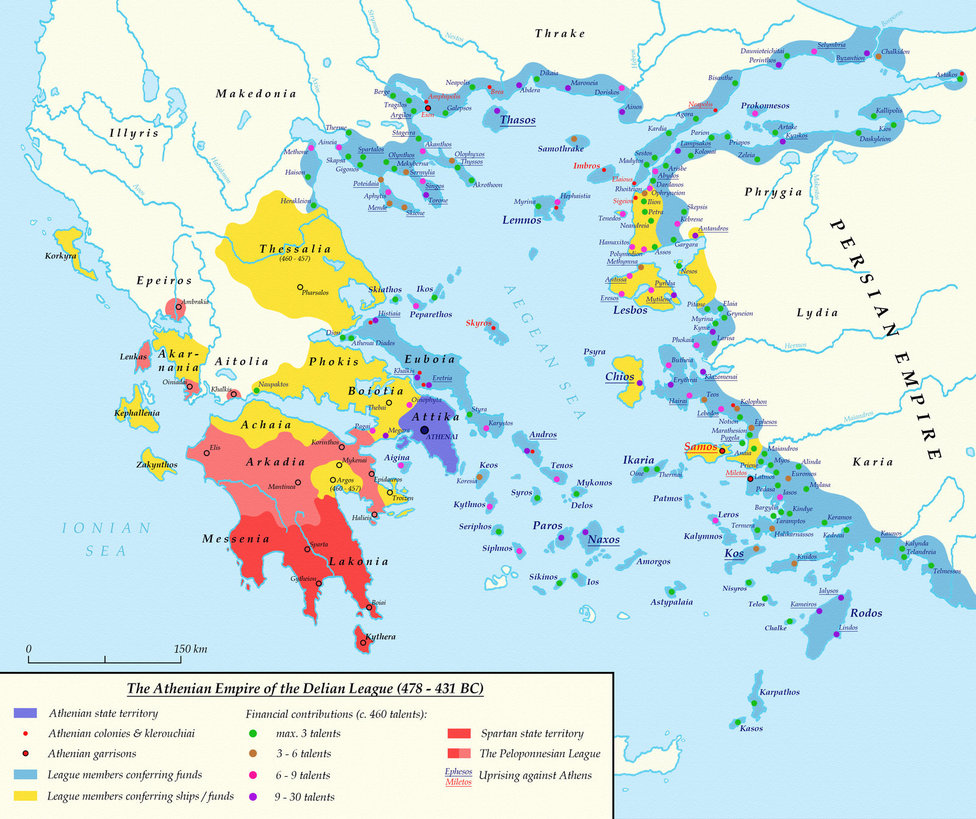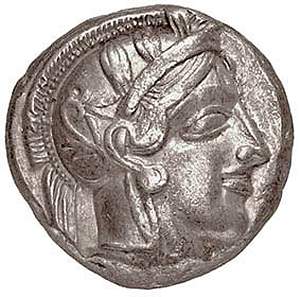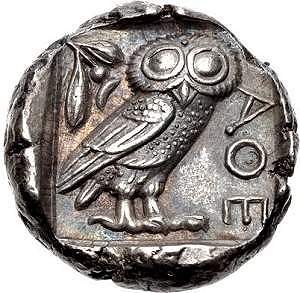Volume One
Ancient and Medieval States
Background
Greek City States

Socially and individually, the Greeks were a fiercely individual people, {1} and each city state (polis) controlled its surrounding territory. That polis typically contained an urban area, often fortified, and a sacred centre built on a natural acropolis or harbour. Each polis was in contact with others through trade, treaties and wars, but was otherwise, in its political, judicial, legal, religious and social institutions and practices, an independent entity. {2}
The Athenian leader Cleisthenes introduced a system of political reforms in 507 BC that he called demokratia, or 'rule by the people'. Three separate institutions made up the demokratia: the ekklesia (a sovereign governing body that wrote laws and dictated foreign policy), the boule, (a council of representatives from the ten Athenian tribes) and the dikasteria (the popular courts in which citizens argued cases before a group of lottery-selected jurors). Cleisthenes' invention spread to other cities, abolishing the political distinctions between the Athenian aristocrats (who had long monopolized the political decision-making process) and the middle- and working-class people who manned their armies and navies. Demokratia did not extend to slaves or foreign residents, however, of whom there 150,000 and 10,000 respectively in mid-fourth century Athens, (in a city of 100,000 fully-fledged citizens). In fact only male citizens over the age of 18 could take part of the democratic process, so that the active citizens in practice numbered only 40,000.
Any active citizen could attend the ekklesia, which made decisions about war and foreign policy, wrote and revised laws, and approved or condemned the conduct of public officials. Ostracism, by which a citizen could be expelled from the Athenian city-state for 10 years, was also among the powers of the ekklesia. The group made decisions by a simple majority vote. To prevent a permanent class of civil servants, positions on the boule were chosen by lot and not election, though the wealthier and more influential citizens were probably more represented than others. Each day, more than 500 jurors were chosen by lot from a pool of male citizens older than 30 for the dikasteria, whose decisions by majority wielded unlimited power. Jurors were also paid (but not well) for attendance. {2}
Freedom (eleutheria) in the Greek city states meant not only 'participating democracy' (as opposed to our representative democracy) but onerous duties. Indeed it was through honourably serving its polis that the Greek citizen became most fully himself. City states were small, and most citizens knew each other, though their wealth and social status could be very different. If aristocrats had the leisure to educate themselves and become wiser and more effective rulers, aristocracies could also become self-perpetuating tyrannies. Equally well, an unrestrained democracy, or rule by an untutored mob, could degenerate into anarchy. The best-run states kept some balance between the two, tyranny and mob-rule, guided by that Greek sense of moderation in all things.
Though the Athenian system began to change into more of an oligarchy under Pericles (around 460 BC), the people governed themselves for 186 years — debating and voting individually on issues great and small, making Athens a decidedly democratic, autonomous, aggressive, and prosperous state. {3}
The Delian League
In 477 BC, a year after the second Persian invasion, several hundred Greek states formed a military alliance to prepare for future invasion, seek revenge against Persia, and organize a means of dividing the spoils of war. Key to the alliance was a common navy, whose construction was supervised by Athens. States not supplying ships agreed to pay a tax into the League's treasury, which was moved from Delos to Athens, ostensibly for safety reasons but also to fund the Parthenon and other building projects. Over time, Athens also progressed from soliciting ships, men and armaments to imposing a tribute for its own purposes. {4-7}.
In short, the alliance became an empire. Pericles instituted quasi-colonies (cleruchiai) that served to garrison the territories, and various ofices (opiskoopoi and archontes), to collect the tribute. Only the Athenian coinage was legal tender, moreover, and in trade with Athens the coinage of other states had to be exchanged for Athenian coinage at established money-changers, or recoined (with the seigniorage going to Athens). When the simmering discontent broke out into the Peleponnesian War (431-404 BC), only Chios and Lesbos would contribute ships to Athens, which was duly defeated by Sparta with Persian help. Athens lost its pre-eminence, and access to the Laurion silver mines. {4-7}.
Nonetheless, Athens was able to form a second confederation of Aegean states, and from 378 to 355 BC led a defence against Spartan and Persian threats. {4}. The previous and unpopular tribute system was wisely replaced by sintaxeis — irregular contributions levied only when needed, and spent quickly. With the rise of Thebes, however, which defeated Sparta in 371 BC, and caused Athens' rapprochement with Sparta, came more unrest and the eventual demise of the second confederation. Greek independence and inter-city warfare finally ended with Philip II of Macedonia, who brought Greece and surrounding territories under his control. When he was assassinated in 336 BC, his son Alexander began the great conquests that ushered in the Macedonian kingdoms. {8-9}.
Coinage in Greece
 | Athens (c.454-431 BC) Ar Tetradrachm. Obverse: helmeted head of Athena facing right. Full crest type. 17.05g, 23mm. (Sear 2526v., Starr Pl. 22 No. 3, Svoronos Pl. 11 No. 7.) |
 | Reverse: Owl within incuse square. Olive sprig and crescent moon left. Greek 'Athe' right (abbreviation for 'of the Athenians') {5} The olive sprig refers to olive oil production, important to the Athenian economy (with silver, pottery and provision of mercenaries.) |
The origins of Greek coinage, the extent of its symbolic and economic uses, and whether indeed it was a commodity or fiat coinage are contentious issues. {10-12} Scholars vehemently disagree — as is the case in many classical coinage issues. {13} Economists, while accepting the symbolic origins of coinage, stress its utility, and argue that small pieces of weighed silver, and then small denominations themselves, preceded the use of the larger denominations collectors are familiar with. No doubt the ability to strike their own coinage was one sign of the independence so dear to Greek hearts, but in fact cities often enjoyed this freedom when under Macedonian and then Roman rule. Nonetheless, many in the wealthy elite of Athens did prefer to invest in silver mining rather than the more aristocratic practice of land-holding, and Athens seems to have been earlier than most city states in lending out temple treasuries to meet the heavy costs of ship building.
Athenian Owls
Athenian' owls', i.e. tetradrachms, are a popular series with collectors. They were legal currency for centuries in Aegean countries, and all the great names of classical Greece will have handled them. The coins come in several types before and after the period of Greece's greatness, and there are many variations within the main types. Rarities exist, of course, but in general the coins were minted in great numbers from Laurion silver at a time when Athenian coinage formed the one legal tender across the Delian League. {14-19} The tetradrachm was too large a denomination for everyday use, moreover, and being restricted to large payments or stores of wealth, is often preserved in a collectable condition.
Imperial Roman issues were changed frequently, but not these tetradrachms. Throughout the classical period (510-323 BC) when Greece, and Athens in particular, were laying the foundations of western civilisation {9} — its great achievements in art, architecture, theatre, literature and philosophy — these coins retained their rather primitive form. By Greek numismatic standards the Athenian tetradrachms are not particularly attractive. Athena's head is crudely shaped, and the reverse owl looks like a child's toy. Clearly the stress was on convenience and continuity. The coins were indeed kept at high silver content, which no doubt emphasized the probity of Athenian institutions, and strength of the city's naval and military forces. Many coins do show test cuts, however, showing either that counterfeiting was a problem, or that image and workmanship weren't alone sufficient to command confidence, making the owls, in part at least, a commodity coinage.
Dating the Series
For so abundant a coinage, the Athenian tetradrachm is unusually plagued with dating problems. Reid Goldsborough, on whose admirable article this section is based, has grouped the many varieties into five types. {15}. The archaic type was minted from 510 BC (when democracy was instituted under Kleisthenes) to 480 BC. Preceding them were 'crest owls', minted from 545 BC but the many different types suggests they were issued by various aristocratic families rather than the state. The intermediate style (also known as late classical, Hellenistic or intermediate) probably dates from around 392 BC to 200 BC, when Athens had limited autonomy under the Hellenistic kingdoms. About the other types there is an extraordinary range of opinion between authorities, catalogues and auction houses -depending on the weight attached to various slender lines of evidence. {15}
Varieties exist in all the types. Goldsborough notes these: {15}
'1. Athena has a wider, smiling mouth that can appear as a smirk rather than a short mouth that's neutral in affect or that curves slightly downward, forming a frown.
2. Athena has a more protruding rather than a flatter face.
3. The eye of Athena is smaller and more symmetrical, with the curve forming the upper half mirroring the curve forming the lower half, rather than the two sides being asymmetrical.
4. The floral scroll on Athena's helmet is smaller rather than larger.
5. The owl has shorter rather than longer claws.
6. The legend consists of smaller rather than larger letters.
7. The incuse square is more clearly visible on the coin's flan rather than being off it.'
He suggests the earlier of types were perhaps issued between c. 454 and 431 BC, with the last date corresponding to the start of the Peloponnesian War. Stylistically, they are closer to the owls minted between 478 and 454 BC. The later types were issued in great numbers, with many dies and engravers making grouping difficult, though Athena may have lost her smile when Athens was no longer pre-eminent.
The problems are these:
1. The lack of documentary evidence: Greeks did not think these mundane matters worth recording, or the records have not survived.
2. Owls were issued in great numbers by Athens, but may also have been copied (i.e. minted) by other states to avoid the seigniorage involved.
3. Because not used in everyday commerce, the tetradrachms tend to turn up in unreported hoards rather than carefully documented excavations. Important information is lost when hoards are clandestinely sold on the black market.
4. We know the geology of the Laurion veins with their complex mineralogical patterns, but don't have the mining records — making dating/grouping by their contained base metals or trace elements next to impossible (not to mention the influence of the refining process and silver from other sources being added to the mix.)
5. We don't know the significance of the varieties — do they point to different period, different mints, or are they simply random, changing with each die-cutter?
The Athenian Empire
The Delian League did not start as an empire, not one of those entities characterized by Greg Woolf as:
'political systems based on the actual or threatened use of force to extract surpluses from their subjects. . . Pre-industrial empires could not support large governmental institutions and so secured their power by promoting a community of interest among élites within the empire, and a sense of imperial membership based on participation in ruler worship and adherence to imperial cultural and symbolic systems. Economically, however, empires were first and foremost tributary structures, and much of the limited energy at their disposal was devoted to ensuring adequate supplies of cash, labour and agricultural produce from the areas under their control.' {13}.
The League did eventually win an important victory over the Persians in 451 BC, but the high-handed Athenian manner also generated discontent and several revolts, all of which were quickly suppressed, sometimes savagely. The punishment of the Mytilenians, for example, was death to the entire male population, later commuted to death of the leading 1000 ringleaders, and redistribution of the land in the entire island of Lesbos to Athenian shareholders. Even dissent could bring reprisals. When the Melians refused to join the League, their city was conquered, the males put to death and the women sold into slavery. {5}. We have to bear these facts in mind when reviewing its celebrated figures. The ancient world was brutal, made more so by frequent wars, savage treatment of captives and wholesale massacres (not unlike China's Period of Warring States, when its own coinage emerged). Modern historians have moved beyond the idealisation of figures like Pericles (c. 495 - 429 BC), so useful to public schools turning out future legislators of the British Empire, to characters much more complex, devious and fascinating. {18} Even that great funeral oration clearly had its propaganda value: Athens was not a full democracy, {21} and did not live up to those inspiring ideals. {22}
What Athens did have was an imperial policy. It set standards in many walks of life, used its democratic institutions to enforce its will on surrounding states, and (with Corinth and Delos) insisted on being the commercial hub of the known world — much as London would become, and then New York. To do so, Athens had to control the coinage, to ensure that Athenian currencies and practices prevailed throughout the Aegean, and were seen to do so. The Carthaginians were not a threat to Greek commerce — they did not mint coins till the mid-fourth century — and Athens was part of a Macedonian kingdom when Rome began to assert itself. Indeed it was Macedonia in the person of Alexander who conquered swathes of west Asia and extended the Athenian pattern of coinage to what is still the common form today: the head of some personage on the obverse, and the representation of some deity on the reverse.
The larger point — as has been emphasized throughout the site — is that human societies are complex. Exemplary improvements in one area of life may be missing from others, or indeed derive from regressive policies elsewhere. The Greek world laid the foundations for the European civilisations, but was accompanied by practices that would seem repellent today: phallic cults, slavery, savagery in war, harsh treatment of women. Its great dramatists could highlight man's injustices, but societies did not generally change, preferring to accept 'that was how life was'. In a similar way, our own academics and social theorists may disclose inconvenient truths behind the newspaper headlines and mainstream media commentary, but have little influence beyond a specialist readership. Societies are governed by power, and human beings have generally enough trouble getting through their everyday struggles with job, family and future to worry overmuch about abstract truths, overseas justice or increased personal freedoms that carry onerous responsibilities.
References and Further Reading
Need the 13 references and 5 illustration sources? Please consider the inexpensive ebook.
